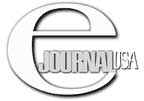
Transcript
President Theodore Roosevelt at the Panama Canal

In Panama, these long, deserted railroad tracks lead only to oblivion, reminders of the failed French attempt to build a canal linking the Atlantic and the Pacific. Roosevelt is determined to drive the canal through.
In 1906, he comes to Panama, the first president to journey outside the United States while in office. There he is welcomed on the cathedral steps by the president of the tiny new republic. It is the culmination of his most audacious political act.
Frustrated in his earlier attempts to negotiate rights across the Isthmus, Roosevelt has intervened in the Panamanian revolution for independence from Colombia. He has recognized the new nation of Panama less than ninety minutes after its successful coup and secured rights for a canal zone on favorable terms to the United States.
Now surveying the task he (President Theodore Roosevelt) has undertaken, he poses on one of the giant machines that will do the job.
In tropical heat and rain, as many as 45,000 workmen will labor for 10 years to build the 40-mile waterway. It is the most massive construction effort ever undertaken on earth.
Using a vast array of shovels and dredges, they will blast a path through the jungles and mountains; build a huge lock that will lift ships 85 feet above sea level.
All of this is made possible by the defeat of the mosquito, the deadly carrier of yellow fever and malaria.
(President Roosevelt) "If I had followed traditional methods, I should have submitted a dignified state paper of probably two hundred pages to the Congress, and the debate would have been going on yet. But I took the Canal Zone and let congress debate; and while the debate goes on, the canal does also.
